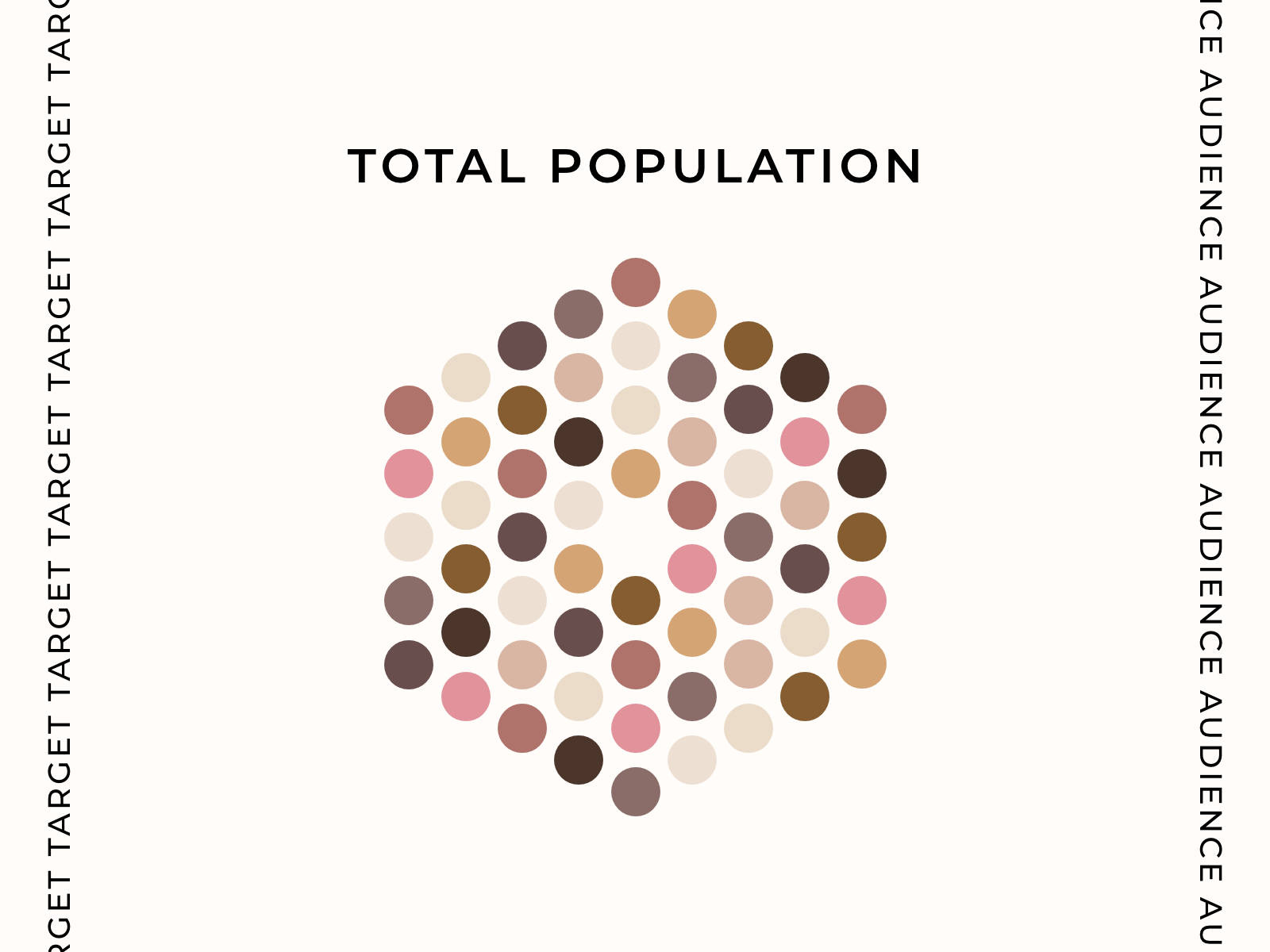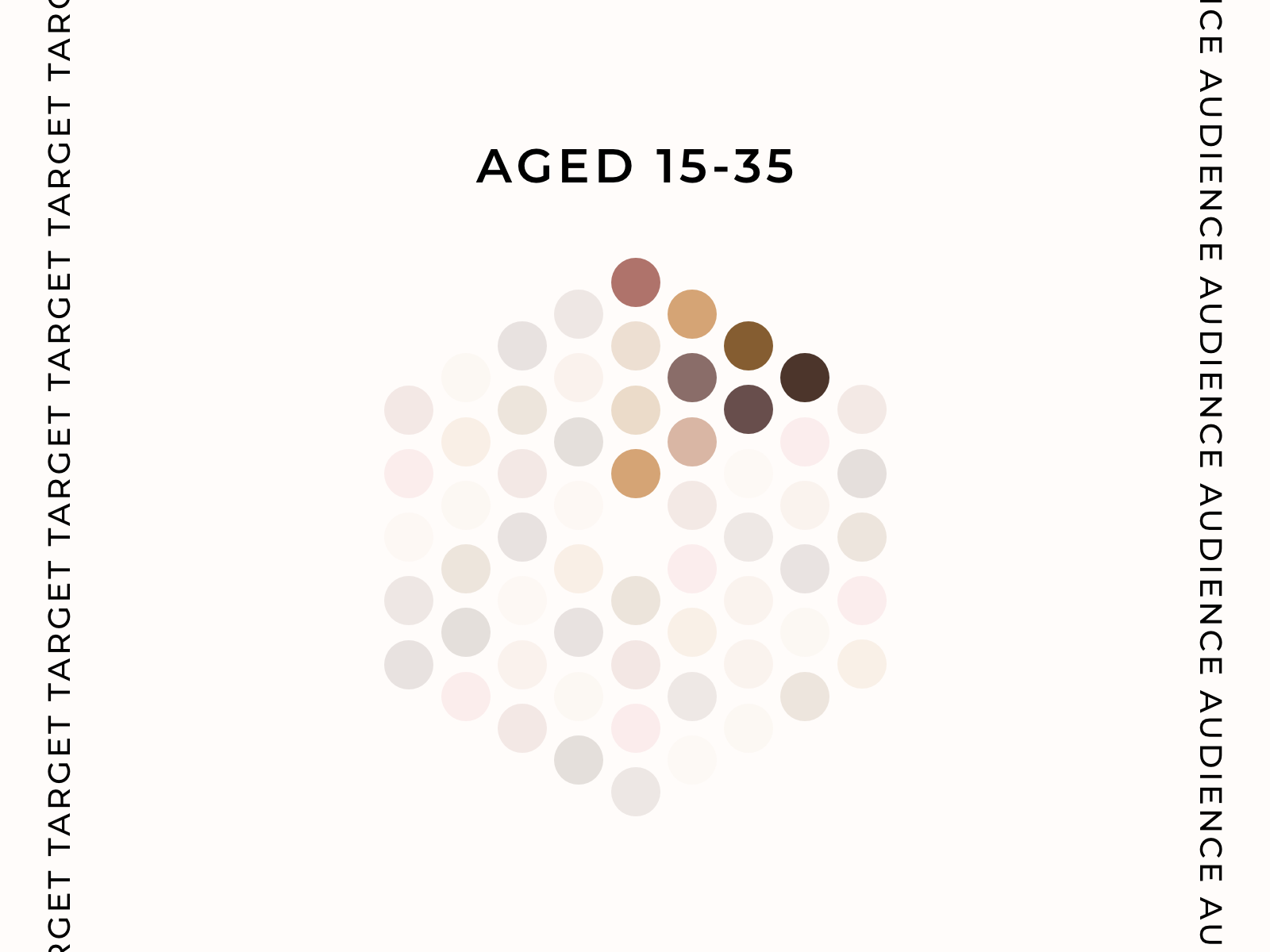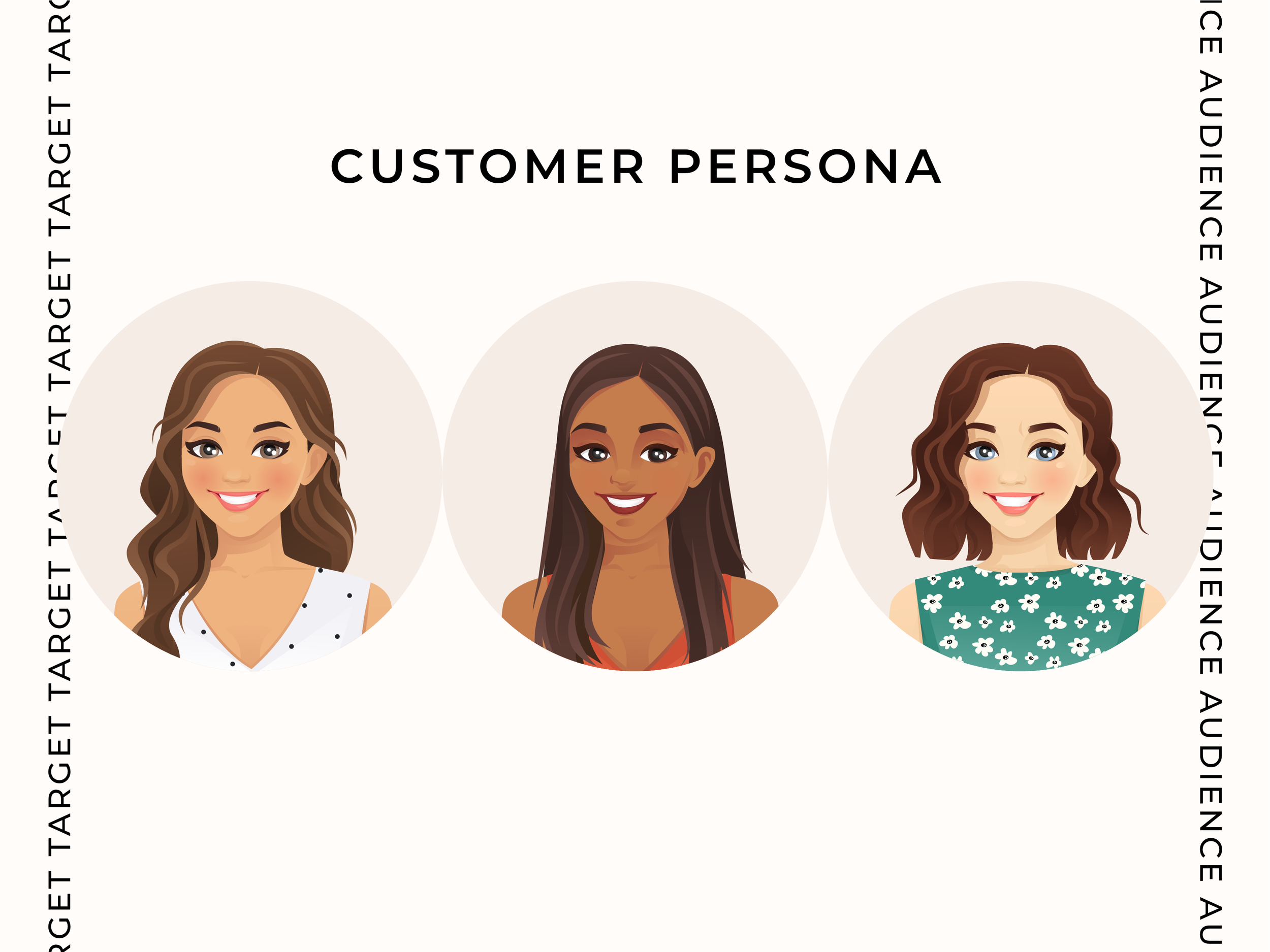If you’re talking to everyone, you’re talking to no one.
Everyone is not your customer.
Repeat it louder for the people in the back.
Everyone is not your customer.*
*Unless you’re a global brand like Coca-Cola, Nike, McDonald’s, Apple or Amazon, and have unlimited funds to take a mass-marketing approach.
It’s time to get specific about who your customer is. You should know them as well as (or better than) your best friend.
Imagine you’re a bikini company.
Let’s work out who your customers are.
(For the sake of simplicity, the following diagram is an example only, and doesn’t represent the complexities of the actual population.)
Let’s say there are 600 people in the world, but your business is local to your country. We geographically segment the population to the 60 people in your country - represented by each of these little dots. This is your total population.
We’re focusing on the ladies, cause, bikinis.
50% of the population are male.
50% of the population are female.
Out of the females, 35% are 15-35 year olds - the group likely to wear bikinis (demographic segmentation).
Within this segment, we need to dive further into psychographic and behavioural segmentation. But without actual data - we’ll use the above as a starting point.
This is your target market - the group of consumers that would be interested in your product or service.
From here you determine which of these people will be your target audience, also known as: market segment, consumer group and ideal customer.
Eg. You might decide to only go after 15-25 year old surfers. Perhaps you already have surfing customers, and want to branch out to new customers in other categories. Or maybe your bikini line is expanding to full swimsuits, and your new target audience are 25-35 year old mums.
It’s possible to have smaller consumer groups within your bigger target audience - as long as they have different wants/needs.
What is a target audience?
A target audience is a specific group of people that your product or service is intended for. You need to understand their demographics, psychographics, behaviours and needs - to effectively market to them.
To have a comprehensive overview of your audience, you need to determine:
Demographic characteristics
These include age, gender, income, education level, occupation and geographic locationPsychographic characteristics
These include personality, interests, values, attitudes, beliefs, opinions and lifestyleBehaviours and needs
Look at how the target audience currently interacts with similar products or services. What are their needs in relation to your product or service, and how do they use it?
Customer Persona
You’ve worked out all of this golden information, but how will you remember it?
Easy. You’re going to create a customer persona.
A customer persona / buyer persona / marketing persona is a fictional character of your ideal customer. It’s based on market research, demographic and psychographic characteristics, behaviours, goals, challenges, the decision making process and other real data about the segments that you want to target.
Having your customer persona in mind will help you to determine which messaging and channels will be the most effective in resonating with that group.
You’re going to picture this character every time you talk to your audience.
Now that you have your target audience defined, you’ll be able to make informed marketing decisions.
You will know which channels to use to reach your ideal customer, and what messages and content will be the most effective when you speak to them.
If you’re interested in deep diving into your Marketing Strategy, get in touch.





